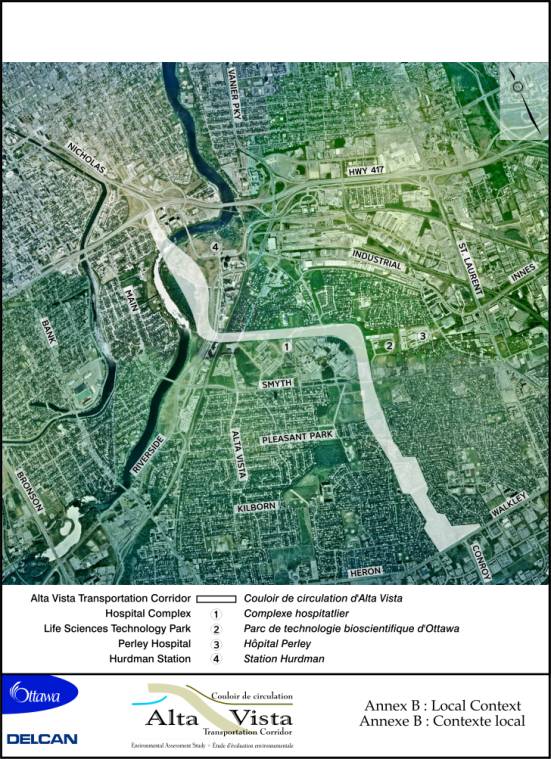John Dance
Draft criteria for assessing the value of proposed new roadways contained in the City’s Transportation Master Plan (TMP) are biased and could lead to building the Alta Vista Transportation Corridor (AVTC), the Old Ottawa East Community Association (OOECA) fears.
“We found the most recent survey about proposed roadway and transit criteria and weighting very strongly biased towards more roads, especially for commuting and shopping, and nothing to weight the value of greenspace and parks as a key component to effective active-transport routing and usage,” Tom Scott, OOECA Director of Transportation and Infrastructure, recently wrote to Mayor Jim Watson and other officials.
In response, City staff recently held a Zoom call with OOECA board members and Councillor Shawn Menard. Although staff did not specifically say they would amend the criteria, they emphasized that there would be a separate review of the AVTC proposal and the impacted communities would be consulted during this review. Staff also acknowledged that that a number of factors had changed since 2013 when the AVTC was approved as part of the TMP.
The draft assessment criteria allow little consideration of the negative impacts of building the four-lane AVTC roadway that would start at Conroy Road and Walkley Avenue and end at Highway 417 and Nicholas Street. The roadway would eliminate much of the unofficial People’s Park, just east of Springhurst Park and would remove greenspace from the Riverview Park area on the eastern side of the Riverview Park. In terms of traffic, Lees Avenue and Nicholas would become much busier and congested.
The draft assessment criteria are, however, concerned with traffic congestion in the areas where the traffic originates. Out of a total possible score of 100, a maximum 55 points could be awarded on the basis of providing a better transportation network in “new and growing areas” and for “relieving congestion in areas where this relief is needed.” The criteria include scant consideration of whether congestion in “downstream” communities will occur because of the construction of a new road.
“City building impacts” can provide up to 20 points but there is little within these criteria that address much of the impact of AVTC on Old Ottawa East and other affected communities. There is one criterion worth four points that addresses negative impacts of a roadway on a “priority neighbourhood,” however, OOE is not deemed a “priority neighbourhood” by the City.
Another criterion is “support for transit,” also worth four points, and, given the proximity of the proposed AVTC to the LRT line, AVTC might score poorly on this count. There is also a four-point criterion for “impacts on natural systems,” but it pertains to “key environmental areas such as wetlands,” so that the impact on People’s Park might not be considered, aside from on its river shoreline feature.
The remaining 25 points for a proposed project address capital and operating costs. Given the potential high cost of a river bridge needed for AVTC and the elevated portion that would run through People’s Park, the cost factor may work against the construction of AVTC. The previous transportation master plan made AVTC a low priority project because of its cost but the project was still kept on the “ultimate” roadway network.







